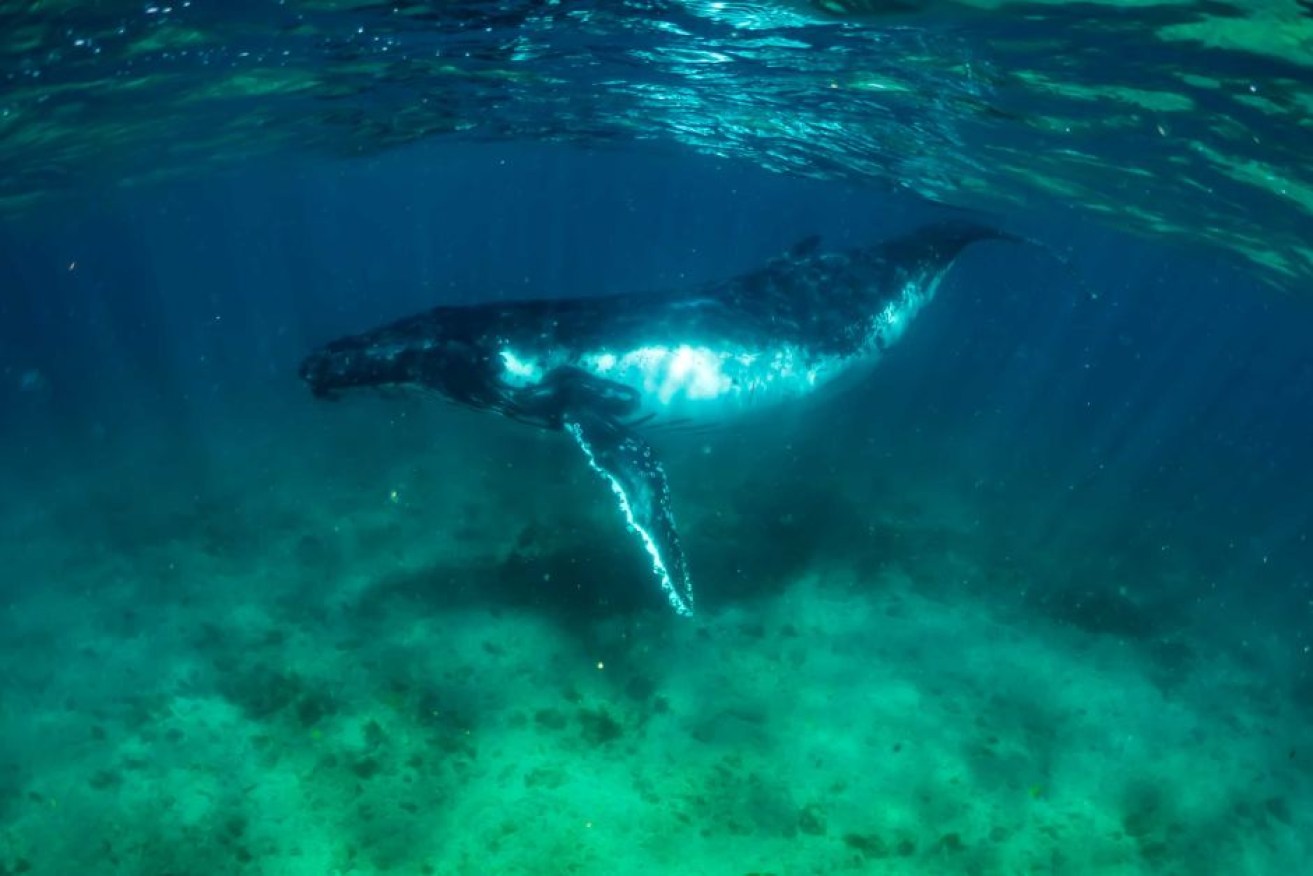WA’s Ninagloo Marine Park joins Great Barrier Reef as bleaching victim of climate change

A humpback whale cruises Ningaloo Reef, now showing signs of bleaching. Photo: Eco Ocean Adventures Photo: Eco Ocean Adventures
Conservationists have recorded evidence of coral bleaching underway at Ningaloo off Western Australia’s north-west coast.
It comes just as the Great Barrier Reef on the other side of the country undergoes another devastating mass bleaching event.
The Australian Marine Conservation Society’s Paul Gamblin said the reefs at Ningaloo Marine Park were among the most magnificent natural wonders in the world.
“These images of coral bleaching … shows emphatically that we’re not doing enough to shift from burning dirty fossil fuels which primarily drives these events,” Mr Gamblin said.
“Every photograph of bleached corals must be a reminder that we have barely begun to make the necessary transition to clean renewable energy and is a clear rebuttal to any claim to the contrary or to any sense of complacency.”
Photographs show sections of the reef turning white this week as WA battles high temperatures.
Coral bleaching happens when the water is too warm, causing the coral to turn white as the nutrients inside them are expelled, leaving them vulnerable to disease and starvation.
Years needed to recover
Successive coral bleaching events will eventually see a reef die off as it takes a decade for the fastest of corals to recover.
Scientists warn coral bleaching events will become more common as global warming intensifies, killing off coral reefs which will have run on effects for the creatures living in the habitat, and local tourism industries.
Mr Gamblin said the Ningaloo-Exmouth Gulf, where the bleaching reef is located, generated “considerable” economic returns.
He said it was hard to determine the long-term impacts of the current bleaching just yet.
Rising sea temperatures made worse by climate change are threatening many of Australia’s underwater ecosystems, including reefs on the west and east coasts, and underwater seaweed forests off the coast of Tasmania.
A United Nations monitoring mission is currently in Australia to gauge Canberra’s efforts to protect the Great Barrier Reef, which may see the world-heritage icon listed as endangered after intense efforts by the federal government to avoid such a designation.
-AAP








